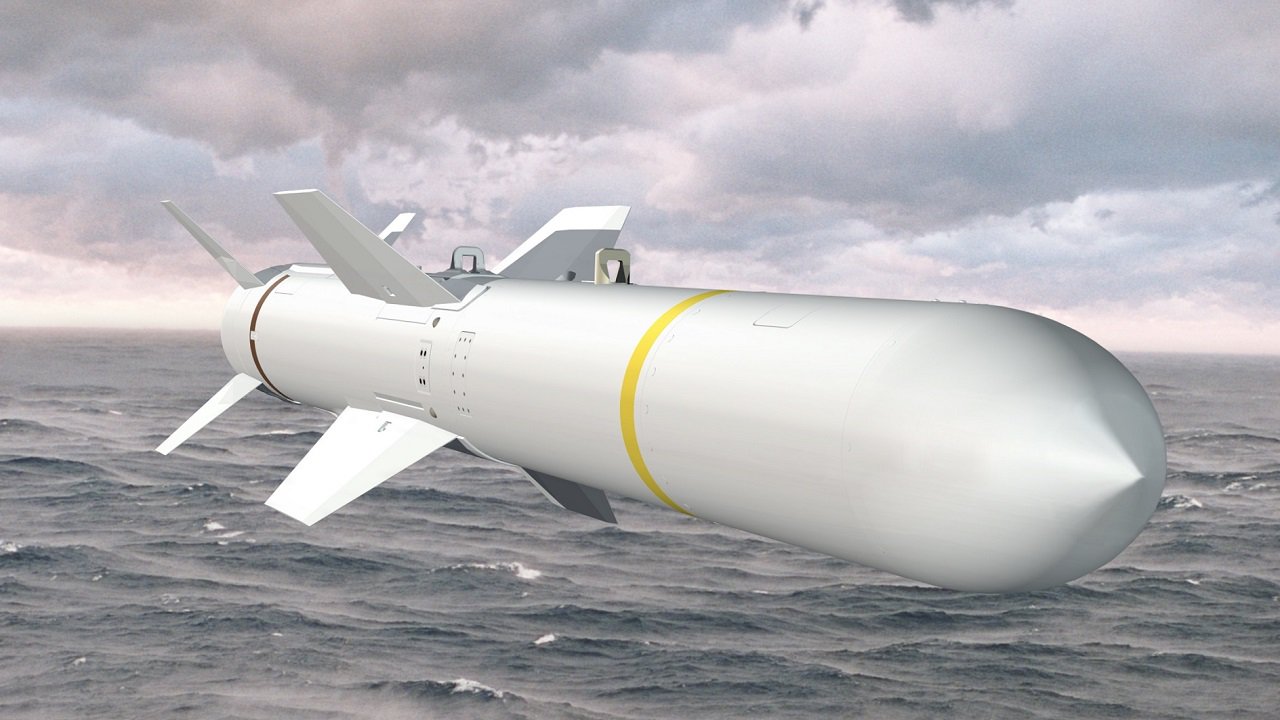On Monday, Denmark announced that it would supply Harpoon anti-ship missiles and a launcher to Ukraine. It is reported to be the RGM-84L-4 Harpoon Block II, which is currently in service with the Royal Danish Navy’s Coastal artillery units. The truck-based coastal defense missile batteries first entered service some 50 years ago but have been steadily upgraded, while the Block II models feature autonomous, all-weather over-the-horizon capability and can execute both land-strike and anti-ship missions.
What Is the Harpoon?
The all-weather, over-the-horizon, Harpoon was developed by McDonnell Douglas – now Boeing Defense, Space & Security – and it utilizes active radar homing to fly just above the water and evade defenses.
The 500-pound blast warhead from the missiles can deliver lethal firepower against a wide variety of land-based targets, including coastal defense sites, surface-to-air missile sites, exposed aircraft, port or industrial facilities, and even ships in port.
The subsonic air-breathing cruise missile has a top speed of about 460 knots and a range of some 70 nautical miles. The Danish models came equipped with inertial guidance and GPS navigation, and have been further enhanced with the latest Boeing Advanced Harpoon Weapon Control Systems (AHWCS).
To strike targets on land and ships in port, the missile utilizes GPS-aided inertial navigation to hit a designated target aimpoint; while for conventional anti-ship missions, including in the open ocean or near-land, the GPS/INS eliminates midcourse guidance errors en route to the target area.
The Harpoon Block II is still in full-rate production, and Boeing currently holds orders to deliver missiles under foreign military sales contracts through 2026.
Harpoon as Coastal Defense
The Harpoon Block II has enough range to reach the Russian-occupied Kherson Oblast from the Ukrainian stronghold in Odesa; or from the Ukrainian-Romanian border to the Russian-occupied Snake Island, which has been at the center of recent naval engagements in the Black Sea.
The Harpoon lacks the range to reach Crimea or the Kerch Strait Bridge from current Ukrainian-held territory, yet it would certainly help ensure that Russian warships stay well clear of Odesa – least the Russian Navy seeks a repeat of the sinking of the Moskva, which was hit by two Ukrainian-made R-360 Neptune subsonic anti-ship missiles, which is based on the Soviet-era Kh-35.
Harpoon Transfer Was in the Works
Last week, Reuters had reported that the White House has been working for weeks to get Ukraine the Harpoons but also the Norwegian-made Naval Strike Missile.
“This is an important and measured step to increase the Ukrainians’ capability and operational intensity against the Russians,” Tom Karako, a senior fellow at the Center for Strategic and International Studies and the director of the Missile Defense Project told Reuters, adding that the weapons “will hold at risk high-value Russian ships attacking Ukraine from the Black Sea or elsewhere.”
Russia’s warships might be best to remain in port in Sevastopol.
Now a Senior Editor for 1945, Peter Suciu is a Michigan-based writer who has contributed to more than four dozen magazines, newspapers and websites. He regularly writes about military hardware, and is the author of several books on military headgear including A Gallery of Military Headdress, which is available on Amazon.com. Peter is also a Contributing Writer for Forbes.

